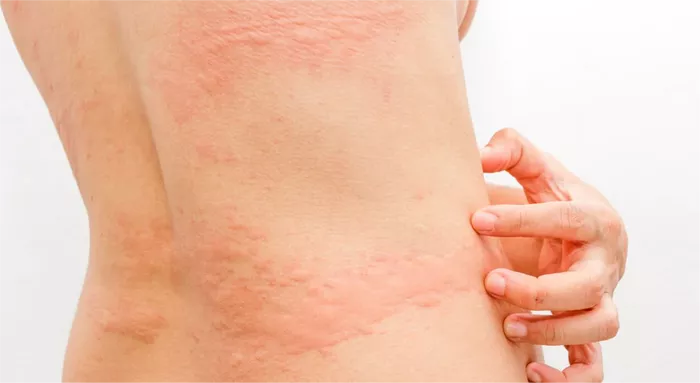Urticaria, commonly known as hives, is a skin condition characterized by itchy welts or bumps that can appear suddenly and disappear within hours. While many cases of urticaria are triggered by allergies or infections, some individuals experience a specific form known as physical urticaria. This type of urticaria is triggered by physical stimuli such as pressure, heat, cold, vibration, or sunlight.
For those affected, physical urticaria can be a source of discomfort and inconvenience, but the question often arises: Is physical urticaria dangerous? In this article, we will delve into the intricacies of physical urticaria, debunk common myths, and provide insights into the potential risks associated with this condition.
Understanding Physical Urticaria
Physical urticaria encompasses several subtypes, each triggered by specific physical stimuli:
1. Pressure Urticaria: Pressure on the skin, such as from tight clothing, belts, or prolonged sitting or standing, can induce hives.
2. Cold Urticaria: Exposure to cold temperatures, even mild ones, can provoke an allergic reaction in individuals with this subtype.
3. Heat Urticaria: Conversely, exposure to heat or warm temperatures can trigger hives in those with heat urticaria.
4. Solar Urticaria: Sunlight, particularly UV radiation, is the culprit for individuals with solar urticaria.
5. Vibration Urticaria: Vibrations from machinery, vehicles, or even loud music can elicit hives in susceptible individuals.
6. Aquagenic Urticaria: Rarely, contact with water, regardless of temperature, can lead to hives in those with aquagenic urticaria.
Each subtype presents unique challenges for diagnosis and management, often requiring specialized evaluation by dermatologists or allergists.
Debunking Myths About Physical Urticaria
Misconceptions about physical urticaria abound, contributing to anxiety and confusion among those affected. Let’s debunk some common myths:
Myth 1: Physical Urticaria Is Always Benign
While physical urticaria is generally not life-threatening, it can significantly impact an individual’s quality of life. Chronic symptoms, such as persistent itching, discomfort, and sleep disturbances, can take a toll on mental well-being and daily functioning.
Myth 2: All Hives Look the Same
Hives can manifest differently depending on the underlying cause and individual factors. While some may experience raised, red welts, others may develop smaller, more dispersed bumps. Additionally, the duration and severity of symptoms can vary widely among individuals.
Myth 3: Physical Urticaria Is Easily Treatable
Managing physical urticaria can be challenging, as triggers are often unavoidable in everyday life. While antihistamines are the primary treatment, their efficacy may vary, and some individuals may require combination therapy or alternative approaches such as phototherapy or immunomodulators.
Myth 4: Avoiding Triggers Is Always Feasible
While avoiding known triggers is advisable, it may not always be feasible, especially in cases where triggers are ubiquitous or essential for daily activities. Balancing symptom management with lifestyle modifications is key to optimizing quality of life for individuals with physical urticaria.
Assessing the Risks of Physical Urticaria
While physical urticaria is generally not considered dangerous in the conventional sense, it can pose risks and complications in certain situations:
1. Anaphylaxis: Although rare, severe allergic reactions, including anaphylaxis, can occur in individuals with physical urticaria, particularly with cold or heat exposure. Anaphylaxis is a medical emergency requiring immediate intervention with epinephrine and prompt medical attention.
2. Secondary Infections: Excessive scratching of hives can break the skin barrier, increasing the risk of secondary bacterial infections. Proper wound care and hygiene are essential to prevent complications.
3. Impaired Quality of Life: Chronic symptoms of physical urticaria can significantly impair quality of life, leading to emotional distress, social isolation, and decreased productivity. Addressing these psychosocial aspects is crucial for holistic management.
4. Impact on Daily Activities: Depending on the subtype and severity of symptoms, physical urticaria can interfere with daily activities such as work, exercise, and recreational pursuits. Adaptive strategies and accommodations may be necessary to mitigate limitations.
Conclusion
While physical urticaria is generally not considered dangerous in the traditional sense, it can have a profound impact on affected individuals’ quality of life and well-being. Understanding the various subtypes, debunking common myths, and assessing potential risks are essential steps in navigating this complex condition. By fostering awareness, promoting effective management strategies, and providing support, healthcare professionals can empower individuals with physical urticaria to lead fulfilling lives despite the challenges they may face.
Related Topics:
























